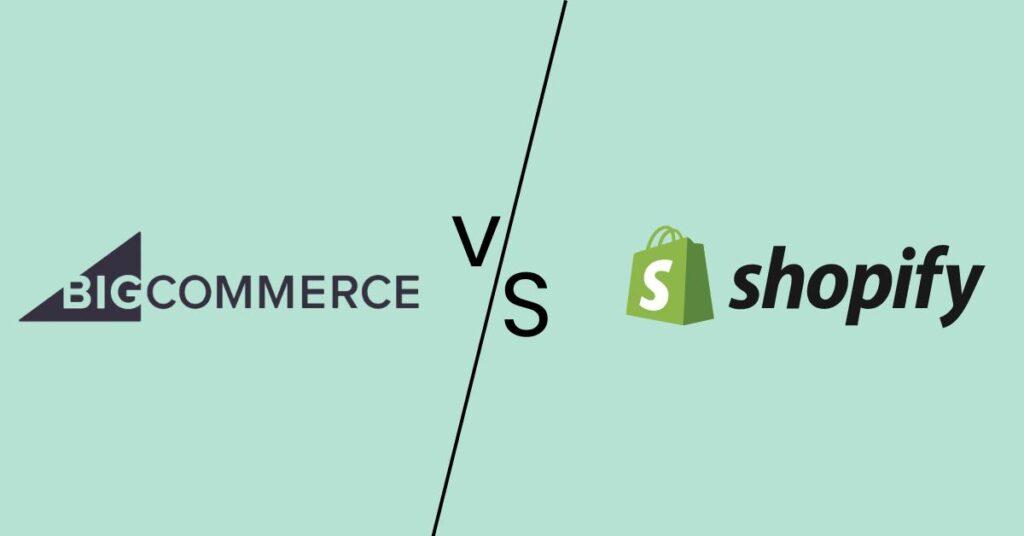Despite the numerous advantages associated with the BigCommerce platform, there comes a time when some online store owners contemplate transitioning to an alternative system. Among its competitors, Shopify is particularly noteworthy.
Shopify is renowned for its user-friendly management and extensive customisation options. However, it is important to remember that BigCommerce boasts high trust ratings and is a crucial component for many online businesses. If you are considering the switch from BigCommerce to Shopify in the BigCommerce vs. Shopify debate, it is beneficial to be aware of the key features involved in this process.
Table of Contents
Overview of BigCommerce and Shopify
BigCommerce has been a staple for many online businesses, known for its robust features that cater to medium to large-scale enterprises. Its scalability, built-in features, and ability to handle large volumes of traffic and transactions make it a reliable choice for established online stores. However, its pricing structure and limited customisation options can be restrictive for some users.
On the other hand, Shopify, a major player in the e-commerce market, is praised for its ease of use, flexibility, and extensive app ecosystem. It caters to a wide range of businesses, from small startups to large enterprises, providing a highly customisable and scalable platform. Its user-friendly interface and extensive resources make it particularly attractive to new entrepreneurs and those looking to grow their online presence without the steep learning curve.
 Reasons for Migration
Reasons for Migration
Several reasons drive e-commerce store owners to switch to Shopify:
Updates
One significant reason for migrating from BigCommerce to Shopify is the pricing structure. BigCommerce’s pricing model includes specific limits on the annual turnover for each tariff plan. As your business grows and your turnover increases, you might need to switch to a higher tariff plan, which can be cumbersome and costly. In contrast, Shopify does not impose such restrictions, offering a more flexible pricing model that can accommodate your business growth without requiring a change in the plan.
Design and Templates
Design is a critical aspect of any online store, as it directly impacts user experience and brand perception. While BigCommerce offers modern and professional designs, its selection of templates is relatively limited. This can be a drawback for businesses seeking unique and diverse design options to stand out in a competitive market. Shopify excels in this area, providing a vast array of templates and design options that can be easily customised to meet specific brand aesthetics and functional requirements. This flexibility allows businesses to create a more personalised and engaging shopping experience for their customers.
Control Panel
Managing an online business effectively requires a user-friendly and intuitive control panel. BigCommerce’s control panel, while powerful, often necessitates some level of training and expertise to utilise fully. This can be a barrier for new users or those who prefer a simpler, more intuitive interface. Shopify addresses this issue with a highly user-friendly control panel that is accessible even to beginners. Its straightforward design and comprehensive resources enable users to manage their stores efficiently without the need for extensive training.
Number of Applications
The availability of applications and add-ons is another crucial factor in choosing an e-commerce platform. BigCommerce offers over 1,000 applications, covering a wide range of functionalities needed to enhance an online store. However, Shopify significantly outpaces BigCommerce in this regard, with over 8,000 applications available. This extensive app ecosystem allows Shopify users to access a broader range of tools and integrations, enabling them to tailor their stores more precisely to their needs. Whether you need advanced analytics, marketing tools, or specific niche functionalities, Shopify’s app store likely has a solution.
Technical Support
Customer support is often a deciding factor for many businesses when choosing an e-commerce platform. While both BigCommerce and Shopify offer comprehensive support, including 24/7 assistance, video tutorials, webinars, help centres, and forums, some users find Shopify’s support to be more robust. Shopify provides a wealth of guides and articles, making it easier for users to find answers and solutions independently. This extensive support network can be particularly beneficial for new users who may require more guidance as they navigate their new platform.
 Ways to Migrate to Another Platform
Ways to Migrate to Another Platform
Migrating from BigCommerce to Shopify involves several steps and can be approached in two main ways: automated and manual migration.
Automated Migration
The automated method is generally simpler and involves using a specific app from Shopify designed to facilitate the migration process. These apps can help transfer various data types, including customer data, orders, and products, reducing the manual workload. However, it is important to understand that while these apps can handle many aspects of the migration, they may not cover everything. For example, custom design elements and certain specific configurations may still require manual intervention.
Manual Migration
Manual migration is often necessary, especially if you plan to redesign your online store or if there are specific elements that automated tools cannot handle. This process involves exporting data from BigCommerce and importing it into Shopify, along with reconfiguring settings and customising the new store to match your brand’s requirements. While it is possible to undertake this work independently, it is often more prudent to enlist the help of qualified specialists. Experienced professionals can ensure a smoother transition, minimising the risk of data loss or other issues.
Choosing the Right Platform
Ultimately, the best course of action is to choose a platform that meets all your requirements from the outset. By carefully evaluating your needs, store features, and personal business management skills, you can select a platform that aligns with your long-term goals. This proactive approach can save you the time and effort associated with switching platforms in the future, allowing you to focus on growing and developing your online store.
Conclusion
Transitioning from BigCommerce to Shopify can offer numerous benefits, including more flexible pricing, a wider range of design options, an easier-to-use control panel, and a larger selection of applications. While the migration process can be complex, understanding the key features and planning carefully can ensure a successful transition. Whether you choose automated tools or seek professional assistance, the goal is to create a seamless and efficient migration, allowing your business to thrive on its new platform.





 Reasons for Migration
Reasons for Migration Ways to Migrate to Another Platform
Ways to Migrate to Another Platform


